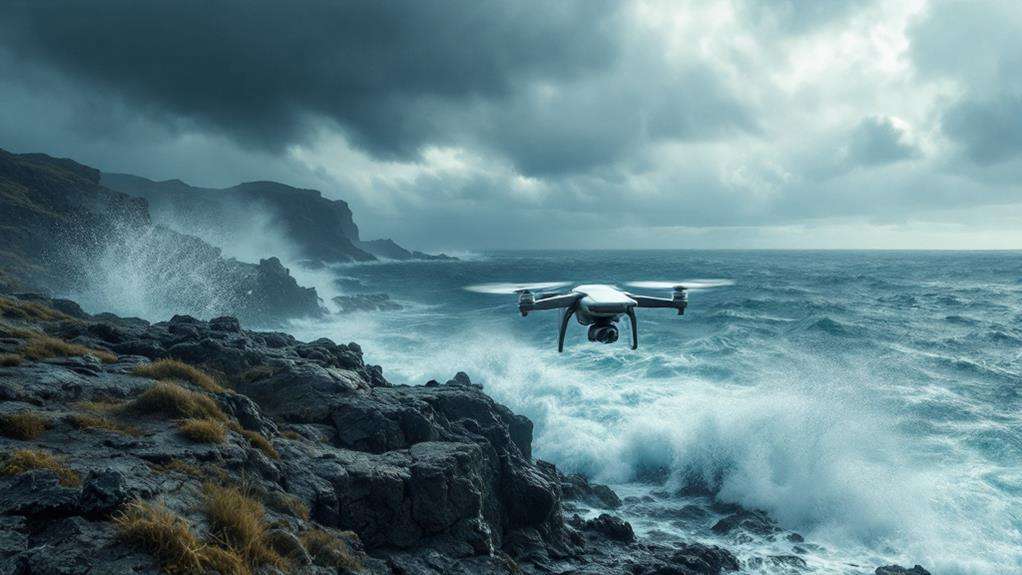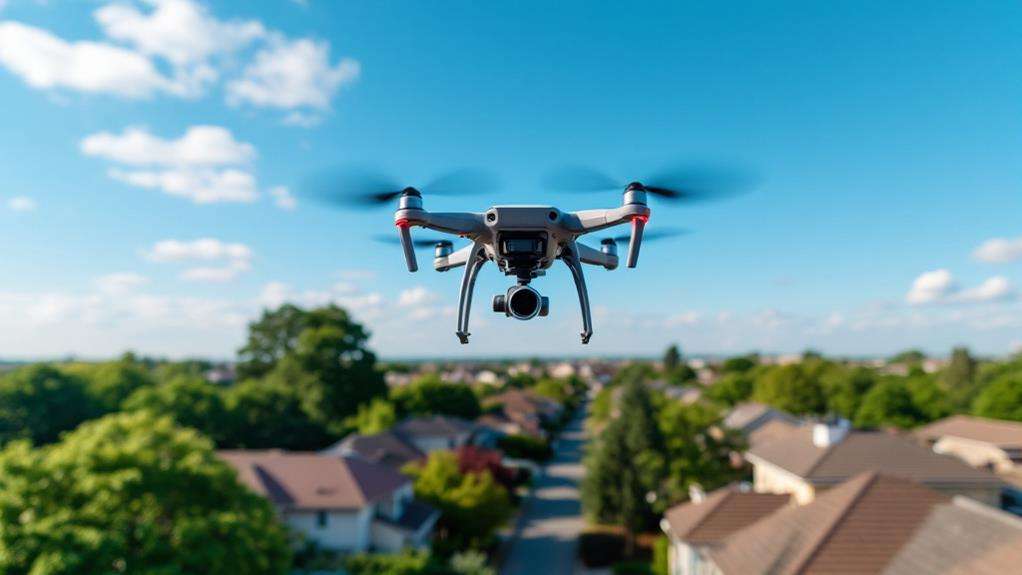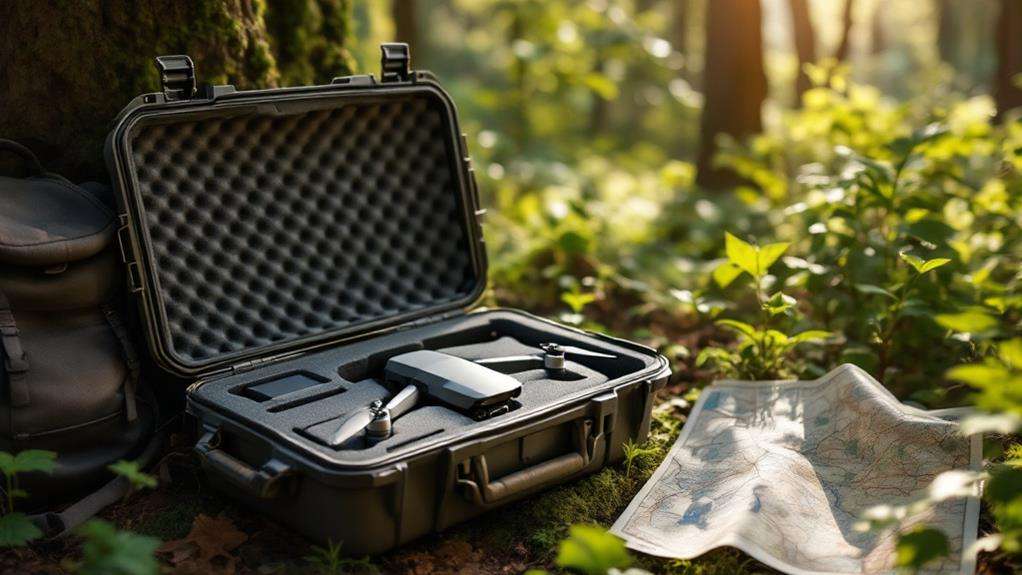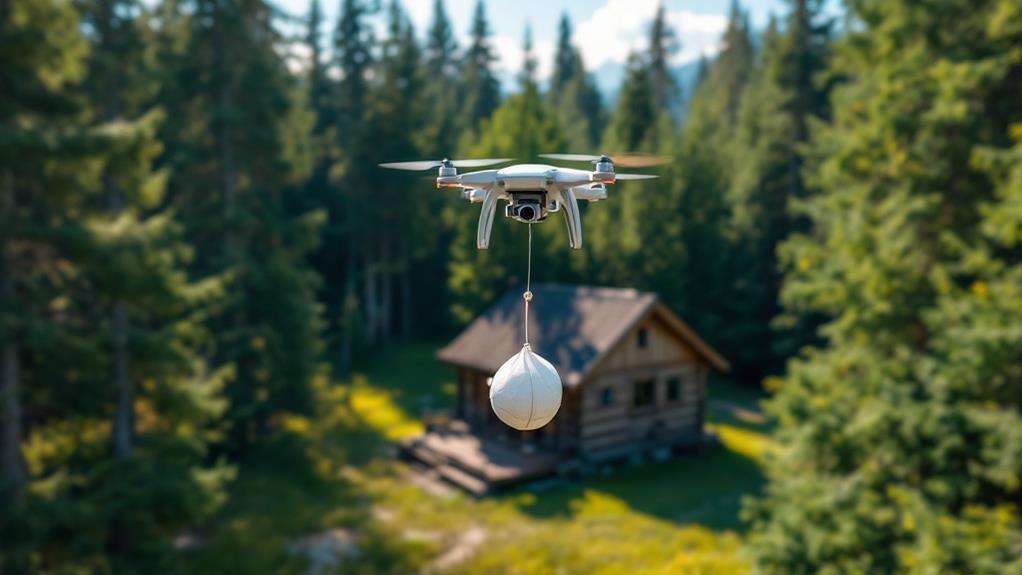Who Is the Father of the Drone?
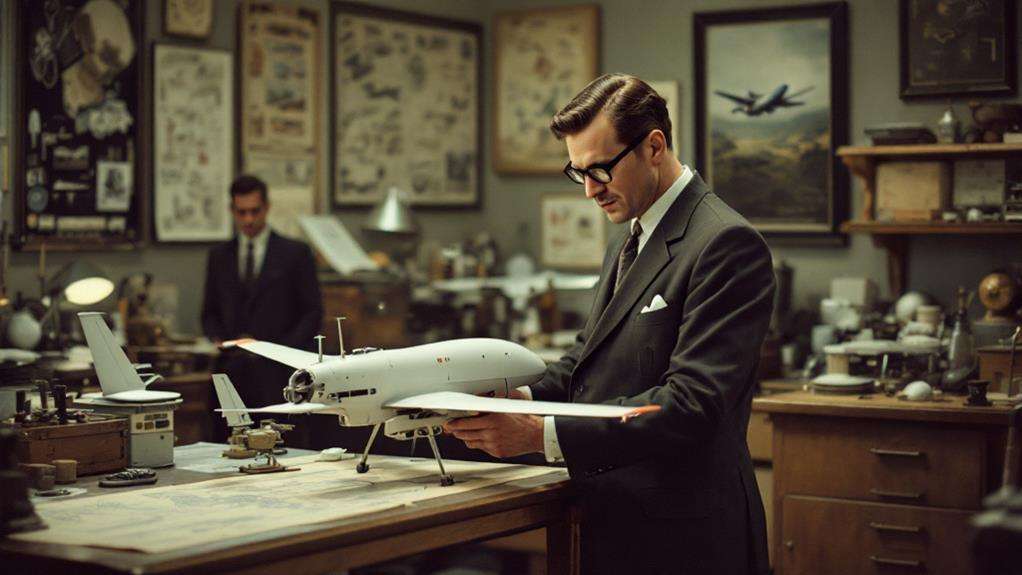
If you're wondering who the father of the drone is, look no further than Abraham Karem. Born in Baghdad in 1937, Karem's interest in engineering started young, with his aeronautics passion leading him to Israel and further drone innovations. He's responsible for pivotal creations like the Albatross and Amber, which paved the way for the MQ-1 Predator drone crucial in military strategies. His efforts have significantly influenced both military and civilian UAV applications, earning him a place in the National Academy of Engineering in 2010. To uncover more about his remarkable journey, there's much to explore.
Key Takeaways
- Abraham Karem, born in Baghdad in 1937, is considered the "father of the drone."
- He developed the first drone for the Israeli Air Force during the 1973 Yom Kippur War.
- Karem founded Leading Systems Inc., pioneering UAV technologies like the Albatross and Amber.
- His innovations led to the MQ-1 Predator drone, revolutionizing military operations and reconnaissance.
- Karem's work significantly influences modern military and civilian UAV technology advancements.
Early Life and Background
Born in Baghdad, Iraq, in 1937 to Assyrian parents, Abraham Karem's journey to becoming the "Drone Father" began early. At the tender age of eight, you might've found him already tinkering with mechanical engineering concepts. By age 14, his fascination with aeronautics had taken flight, setting the stage for a lifelong journey into the world of unmanned aerial vehicles (UAVs). His early passion for building model aircraft was more than just a hobby—it was the foundation for his future innovations. His work would eventually intersect with the historical evolution of military drones, which have been adapted for commercial purposes in industries like agriculture and construction. In 1951, Karem immigrated to Israel, a move that significantly shaped his career path. He pursued his passion for aeronautics at the renowned Technion Institute of Technology, where he graduated with a degree in aeronautical engineering. His education equipped him with the skills necessary to transform his childhood interests into groundbreaking technological advancements. During the Yom Kippur War in 1973, Karem created his first drone for the Israeli Air Force. This pivotal moment marked the beginning of his impact on UAV technology. His early life experiences and education laid the groundwork for him to earn the title "father of UAV," revolutionizing aerial technology and warfare.
Pioneering UAV Development
Building upon the foundation laid during his early years and education, Abraham Karem's pioneering work in UAV development marked a turning point in aerial technology. Known as the "founding father of UAV," Karem's journey began in a garage where he founded Leading Systems Inc. His creation, the Albatross, was the first UAV that caught the attention of the U.S. military and DARPA. Weighing 200 pounds and equipped with a camera, the Albatross paved the way for future innovations in drone technology. Karem's advanced research didn't stop there. His work on the Amber drone led directly to the development of the MQ-1 Predator, a game-changer in military operations. The Predator drone became an essential tool for reconnaissance and strikes, transforming how real-time surveillance and remote warfare are conducted. The transition to civilian use of UAVs, authorized by the FAA in 2006, further highlights the impact of Karem's work on both military and civilian sectors. Karem not only advanced unmanned aerial vehicles but also redefined military strategy with his contributions. His relentless pursuit of innovation in UAVs has left a lasting impact on aerial technology, highlighting his role as a pivotal figure in modern military operations. Karem's legacy as a trailblazer in drone technology continues to influence current and future developments in unmanned aerial vehicles.
Engineering Breakthroughs
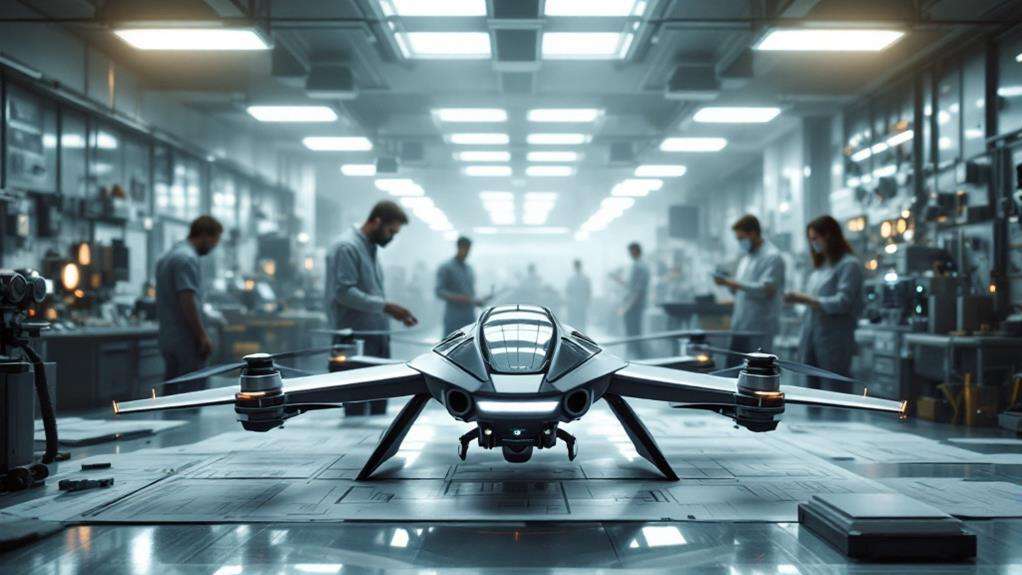
Abraham Karem's engineering breakthroughs in UAV technology have fundamentally reshaped how we perceive aerial systems. Often hailed as the "drone father," Karem's journey began in the 1970s with the development of the Albatross. This innovative UAV drew the attention of the U.S. military and the Defense Advanced Research Projects Agency (DARPA), setting the stage for future advancements.
By founding Leading Systems Inc. in his garage, Karem embarked on a mission to revolutionize UAVs. His groundbreaking work led to the creation of the Amber drone, which eventually evolved into the General Atomics MQ-1 Predator drone. This iconic drone became synonymous with modern warfare and changed the landscape of reconnaissance and surveillance. The Predator, developed under Karem's guidance, is renowned for its reliability and effectiveness in targeted operations, making it an indispensable tool for the CIA.
Karem's engineering breakthroughs didn't stop there. His contributions extended to variable rotor speed VTOL aircraft systems, earning him election to the National Academy of Engineering in 2010. These innovations have cemented Karem's legacy, influencing UAV technology and redefining aerial capabilities in both civilian and military contexts. His work continues to inspire new developments in aviation.
Contributions to Military Technology
In the realm of military technology, the Predator drone stands as a testament to innovation and strategic advancement. Abraham Karem, often called the "Drone Father," was pivotal in this transformation. His journey into the world of unmanned aerial vehicles (UAVs) began with the Albatross drone, a 200-pound machine equipped with a surveillance camera. This early creation laid the groundwork for future developments in military reconnaissance.
Karem's next significant innovation was the Amber drone, which directly influenced the design of the now-iconic MQ-1 Predator. The Predator drone revolutionized how military forces engage in remote warfare, providing real-time intelligence gathering that's crucial for modern military strategy. It allowed for safer and more effective reconnaissance missions, significantly reducing risks to personnel in combat situations.
The Predator's capabilities made it a key asset for the CIA and military operations, transforming how intelligence is collected and analyzed. By enabling remote operations, Karem's work with UAVs has reshaped military strategies worldwide. His contributions have ensured that nations can conduct precise and efficient targeted operations, enhancing both the safety of military personnel and the effectiveness of strategic missions.
Industry Recognition and Honors

Celebrated as the "drone father," Abraham Karem's groundbreaking achievements in UAV technology have earned him widespread recognition and numerous accolades. His pioneering work on the MQ-1 Predator drone has revolutionized military operations and aerial reconnaissance, solidifying his status as a key figure in the evolution of drone technology. Karem's innovations have not only reshaped military strategies but have also set new standards in the industry, driving advancements in unmanned aerial vehicles (UAVs).
In 2010, Karem's substantial contributions to aeronautics and UAV technology were formally recognized when he was elected to the prestigious National Academy of Engineering. This honor underscored his influence on both military and civilian applications of drone technology. His advancements, especially in long-endurance UAVs and variable rotor speed VTOL aircraft systems, continue to be celebrated by peers and professionals alike.
Major publications frequently cite Karem's work, emphasizing its impact on modern aerial reconnaissance and military tactics. His legacy endures through a variety of awards and honors, acknowledging his role in transforming the landscape of drone technology. As you explore the world of UAVs, you'll find that Karem's influence is both pervasive and profound, marking him as an enduring titan in the field.
Impact on Modern Warfare
Transforming the battlefield, the MQ-1 Predator drone has redefined modern military operations by enhancing reconnaissance and surveillance capabilities. Thanks to Abraham Karem, often hailed as the "drone father," the development of UAVs like the MQ-1 Predator has significantly increased operational efficiency. You can now gather real-time intelligence without putting troops directly in harm's way, a shift that has revolutionized military strategy.
Incorporating unmanned systems has changed warfare dynamics, allowing for precise targeted strikes and reducing collateral damage. Karem's innovations have enabled militaries to conduct operations with heightened precision, significantly altering how conflicts are approached and managed. By using UAV technology, you can now perform surveillance and reconnaissance missions remotely, minimizing risks to personnel and maximizing the effectiveness of military operations.
The advancements in drone technology have not only transformed reconnaissance but also the broader spectrum of military tactics. As a result, you can engage in remote warfare, leveraging UAVs to execute targeted strikes with unparalleled accuracy. This evolution underscores the critical role that unmanned systems play in contemporary combat scenarios, highlighting how Karem's contributions have shaped the future of warfare. His legacy continues to influence military operations worldwide, emphasizing the importance of drones in modern conflicts.
Challenges in Drone Evolution

Despite the remarkable advancements in drone technology, the evolution of these devices has not been without challenges. Drones equipped with cameras can infringe on individual privacy rights, sparking significant privacy concerns. This has led to calls for stricter regulations to ensure that this technology is used responsibly. Additionally, safety challenges arise as drones have the potential to interfere with manned aircraft operations. This interference necessitates the establishment of comprehensive airspace regulations to prevent accidents.
Security risks are a major issue, as drones could be misused for espionage or as delivery systems for weapons, posing significant national security concerns. These risks highlight the need for robust security measures and consistent regulations across regions. The varied global regulatory landscape complicates drone operations further, with differing laws and guidelines impacting how drones can be utilized in different areas.
Moreover, noise pollution from drone operations can disrupt residential areas and disturb wildlife habitats. This has led to community pushback against the use of drones, as people seek to protect their environments from the noise and potential intrusion. Balancing the benefits and challenges remains crucial as technology allowed drones to proliferate.
Future Prospects and Innovations
With the rapid pace of technological advancements, the future of drones holds exciting prospects and innovations. You can expect unmanned aerial vehicles (UAVs) to become even more autonomous with artificial intelligence and machine learning, enabling them to make real-time decisions in complex environments. This will be crucial for both military applications and national security operations, where stealth, endurance, and payload capacity are continuously improving.
| Innovation Area | Future Prospects |
|---|---|
| Artificial Intelligence | Enhanced autonomy and decision-making capabilities |
| Urban Air Mobility (UAM) | Reduction of traffic congestion through eVTOL vehicles |
| Military Applications | Improved stealth and endurance for security operations |
| Drone Swarms | Transformation in military and disaster response |
| Safety and Privacy | Development of new regulatory frameworks |
The development of Urban Air Mobility (UAM) by companies like Uber and Airbus is another exciting area. They're working on electric vertical takeoff and landing vehicles to alleviate traffic congestion. Additionally, drone swarms, acting in coordinated groups, promise to revolutionize operational capabilities in various sectors.
As drone technology continues to evolve, addressing safety and privacy concerns will be paramount. New regulatory frameworks will ensure that UAVs are safely integrated into civilian airspace, paving the way for these innovations to take flight.

